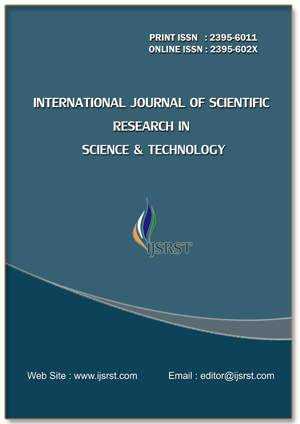Harnessing the Sun: Implementation of Statistical, ML and ANN based Models for Solar Forecasting
DOI:
https://doi.org/10.32628/IJSRST251222605Keywords:
Renewable energy Systems, Solar PV Systems, Forecasting, Final energy balance, Deep Learning, Optimization algorithms, Machine learningAbstract
As a result of the increased use of renewable energy technologies, such as solar and wind power, the development of reliable forecasting methodologies has become necessary in order to maximize the integration of these intermittent and variable resources into the electrical grid. Traditional techniques of forecasting have inherent limitations when it comes to capturing the intricate and nonlinear patterns that are inherent in the generation of renewable energy that are present. On the other hand, the fast improvements in machine learning and deep learning models have opened up new potential for the development of forecasting systems for renewable energy that are more accurate and resilient.The limits of standard forecasting approaches, which frequently struggle to capture the complex non-linear connections and dynamic patterns that are inherent in renewable energy systems, have prompted academics to investigate the application of sophisticated machine learning and deep learning models as a means of addressing these constraints. The purpose of this research paper is to present a complete review of the most recent achievements in the field of renewable energy forecasting, with a particular emphasis on the use of approaches that involve machine learning and deep learning. Using historical data on weather and energy output, we test the accuracy of a number of different supervised statistical and machine learning techniques, including linear regression, decision tree, and random forest, as well as an artificial neural network-based model called multi-layer perceptron (MLP). This study will address the performance of a variety of machine learning and artificial neural network (ANN) based models, as well as their respective strengths and limitations, and the major elements that determine the reliability of their predictions.
📊 Article Downloads
References
Moss, R. H., et al. (2010). The next generation of scenarios for climate change research and assessment. Nature, 463(7282), 747–756.
J. Conti, P. Holtberg, J. Diefenderfer, A. LaRose, J. T. Turnure, and L. Westfall. (2016) International energy outlook 2016 with projections to 2040.
Nazari-Heris, M., Asadi, S., Mohammadi-Ivatloo, B., Abdar, M., Jebelli, H., & Sadat-Mohammadi, M. (Eds.). (2021). Application of machine learning and deep learning methods to power system problems. Berlin/Heidelberg, Germany: Springer.
Wazirali, R., et al. (2023). State-of-the-art review on energy and load forecasting in microgrids using artificial neural networks, machine learning, and deep learning techniques. Electric power systems research, 225, 109792.
Nutkiewicz, A., Yang, Z., & Jain, R. K. (2018). Data-driven Urban Energy Simulation (DUE-S): A framework for integrating engineering simulation and machine learning methods in a multi-scale urban energy modeling workflow. Applied Energy, 225, 1176–1189. https://doi.org/10.1016/j. apenergy.2018.05.023
Luo, X. J., Oyedele, L. O., Ajayi, A. O., &Akinade, O. O. (2020). Comparative study of machine learning-based multi-objective prediction framework for multiple building energy loads. Sustain Cities Society, 61, 102283. https://doi.org/10.1016/j.scs.2020.102283
Benti, N.E.; Chaka, M.D.; Semie, A.G.( 2023) Forecasting Renewable Energy Generation with Machine learning and Deep Learning: Current Advances and Future Prospects. Sustainability 2023, 15, 7087.
Jang, Jiyeon & Kim, Beopsoo& Kim, Insu. (2024). Comparative Analysis of Deep Learning Techniques for Load Forecasting in Power Systems Using Single-Layer and Hybrid Models. International Transactions on Electrical Energy Systems. 2024. 10.1155/2024/5587728.
Ukoba, K., Olatunji, K. O., Adeoye, E., Jen, T.-C., &Madyira, D. M. (2024). Optimizing renewable energy systems through artificial intelligence: Review and future prospects. Energy & Environment, 0(0). https://doi.org/10.1177/0958305X241256293
C. P´erez-Collazo, D. Greaves, G. Iglesias, A review of combined wave and offshore wind energy, Renew. Sustain. Energy Rev. 42 (2015) 141–153
A. Akpınar, P.J. Rosa-Santos, D. Carvalho, Editorial: offshore wind and wave energy and climate change impacts, Front. Energy Res. 10 (2022) [Online]. Available: https://www.frontiersin.org/articles/10.3389/fenrg.2022.1002690
Z. Zheng, L. Sun, Path following control for marine surface vessel with uncertainties and input saturation, Neurocomputing 177 (Feb. 2016) 158–167, https://doi.org/10.1016/J.NEUCOM.2015.11.017
Downloads
Published
Issue
Section
License
Copyright (c) 2025 International Journal of Scientific Research in Science and Technology

This work is licensed under a Creative Commons Attribution 4.0 International License.
https://creativecommons.org/licenses/by/4.0




